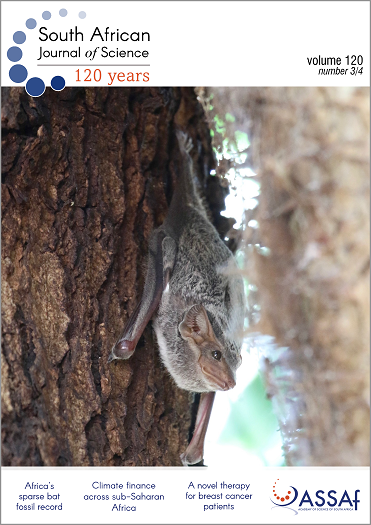Climate finance across sub-Saharan Africa: Decision trees and network flows
DOI:
https://doi.org/10.17159/sajs.2024/15837Keywords:
mitigation, adaptation, climate finance architecture, multilateral climate funds, IPCCAbstract
The structure of climate finance flows from donors (multilateral sources) to recipients (sub-Saharan African countries) was studied. This is the first study to provide a comprehensive network structure of the climate finance flows into Africa, based on the global public climate finance governance system. Network theory and decision tree techniques were employed. The results obtained generally fit the multilateral funding units (MFUs) into two categories: central funding units (CFUs), which simultaneously attend to the climate-related projects of many African countries, and the boundary funding units (BFUs), which cater to only a few countries at once. An isolated region with no BFUs was identified. African countries within this group could be more exposed to climate financial risk as they rely on only the CFUs. In general, with the exception of mitigation REDD (reducing emissions from deforestation and forest degradation) climate finance, a disproportionate distribution of climate themes, with particular reference to adaptation finance, was observed across sub-Saharan Africa. This has real implications for equitable resource allocation of climate funds. The need for African-bred region-wide MFUs is recommended.
Significance:
Insights from this analysis expose the presence of contagion effects within the sub-Saharan African climate finance network structure and, consequently, the flow of climate finance-related risks. This knowledge is critical for future planning as it can provide African governments and interested stakeholders with informed evidence upon which they can make reliable and justifiable decisions, such as shaping of sectoral strategies and improving of climate finance flow coordination.
Downloads
Published
Issue
Section
License

All articles are published under a Creative Commons Attribution 4.0 International Licence
Copyright is retained by the authors. Readers are welcome to reproduce, share and adapt the content without permission provided the source is attributed.
Disclaimer: The publisher and editors accept no responsibility for statements made by the authors
How to Cite
- Abstract 508
- PDF 802
- EPUB 125
- XML 180
- Supplementary material 197












.png)